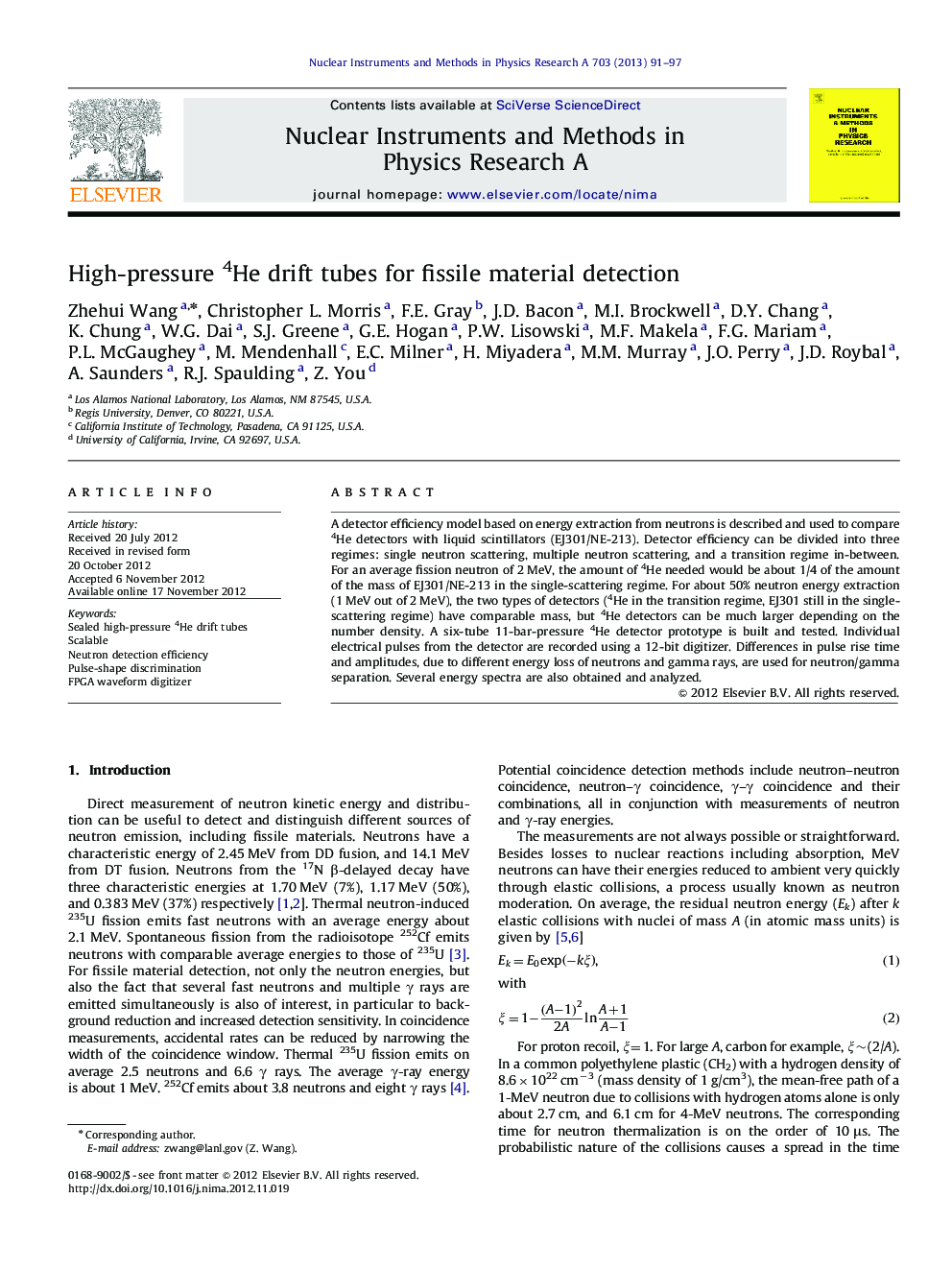| Article ID | Journal | Published Year | Pages | File Type |
|---|---|---|---|---|
| 1823338 | Nuclear Instruments and Methods in Physics Research Section A: Accelerators, Spectrometers, Detectors and Associated Equipment | 2013 | 7 Pages |
Abstract
A detector efficiency model based on energy extraction from neutrons is described and used to compare 4He detectors with liquid scintillators (EJ301/NE-213). Detector efficiency can be divided into three regimes: single neutron scattering, multiple neutron scattering, and a transition regime in-between. For an average fission neutron of 2Â MeV, the amount of 4He needed would be about 1/4 of the amount of the mass of EJ301/NE-213 in the single-scattering regime. For about 50% neutron energy extraction (1Â MeV out of 2Â MeV), the two types of detectors (4He in the transition regime, EJ301 still in the single-scattering regime) have comparable mass, but 4He detectors can be much larger depending on the number density. A six-tube 11-bar-pressure 4He detector prototype is built and tested. Individual electrical pulses from the detector are recorded using a 12-bit digitizer. Differences in pulse rise time and amplitudes, due to different energy loss of neutrons and gamma rays, are used for neutron/gamma separation. Several energy spectra are also obtained and analyzed.
Related Topics
Physical Sciences and Engineering
Physics and Astronomy
Instrumentation
Authors
Zhehui Wang, Christopher L. Morris, F.E. Gray, J.D. Bacon, M.I. Brockwell, D.Y. Chang, K. Chung, W.G. Dai, S.J. Greene, G.E. Hogan, P.W. Lisowski, M.F. Makela, F.G. Mariam, P.L. McGaughey, M. Mendenhall, E.C. Milner, H. Miyadera, M.M. Murray, Z. You,
